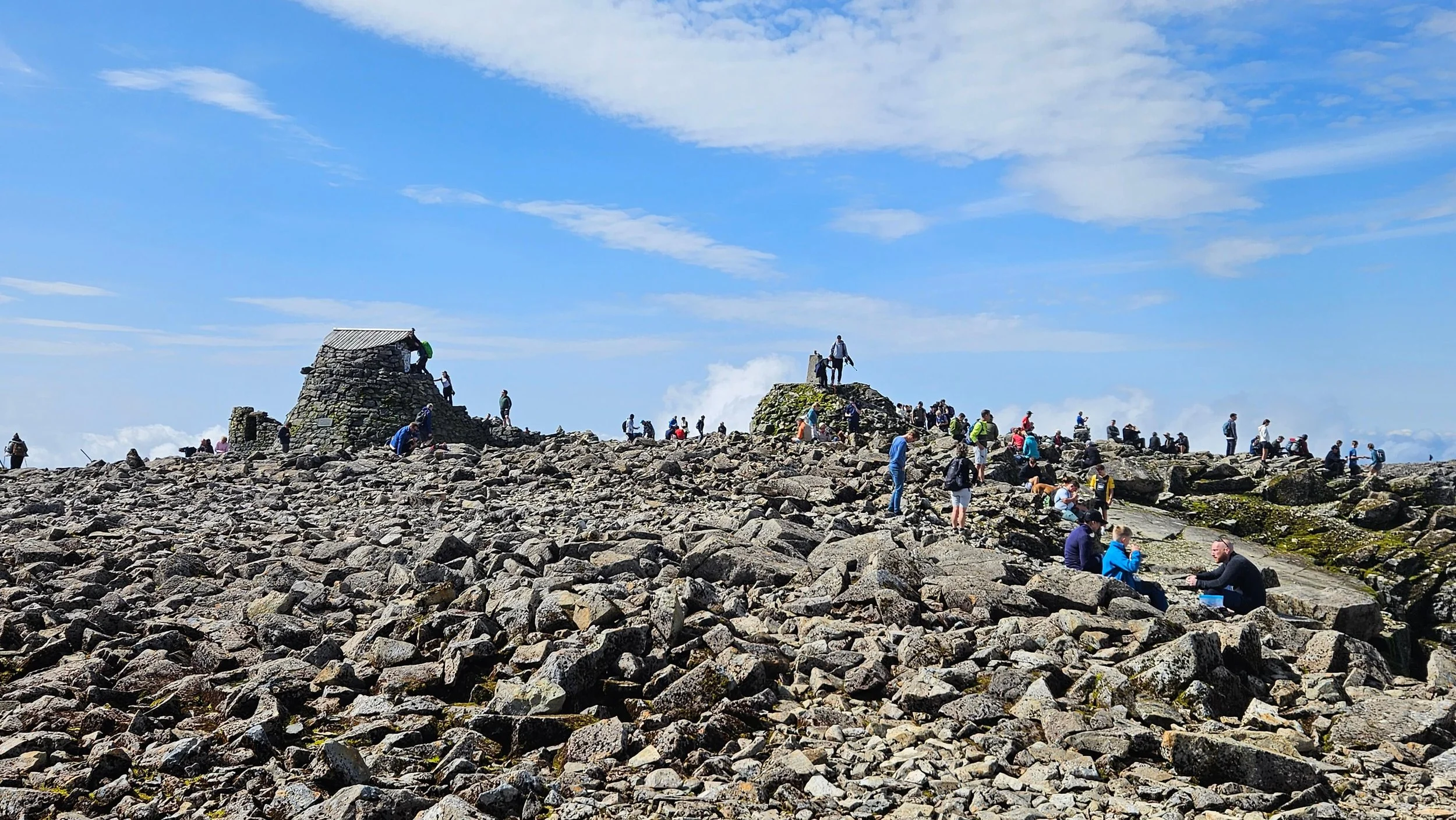
Tips For Climbing Ben Nevis
Although I sometimes guide on Ben Nevis, the majority of people want to climb “The Ben“ on their own. The Mountain Path route is steep and rocky in places, but there’s a path all the way to the top. Here’s some information to help you make a decision about tackling Ben Nevis.
How Easy Is It To Climb Ben Nevis?
Most people summit Ben Nevis with no problems, however, it’s a tough physical challenge. The mountain path is relentlessly steep so you should only attempt it if you have some hiking experience, appropriate outdoor clothing and are fairly fit.
Up and down takes around 4-6 hours for fit people and 6-9 hours for less fit people. There are a few rocky sections that may challenge anyone with minimal hiking experience. The path towards the top is uneven and strewn with boulders and loose rock.
Let’s not forget that Ben Nevis is the highest mountain in the UK at 1,345m (4,413ft). The mountain track up and back is 16km (10 miles) with 1,340m (4,396 ft) of ascent. Snowdon / Yr Wyddfa, the highest mountain in Wales, by the Pyg track is 11km (6.8 miles) but only 860m (2,823 ft) of ascent. The extra 5km isn’t the problem, it’s the additional 480m of uphill climb that gets you!
The more prepared you are for uphill walking, the easier it is. Download my digital guide to Climbing Ben Nevis.
How Do I Train To Climb Ben Nevis?
If you’re concerned about your fitness, I recommend a few training hikes beforehand to get your body ready. It depends where you live, but look to walk at least one mountain at around 70% of Ben Nevis (12km walk & 950m of ascent). That’s the majority of Scottish Munros, the highest four Wainwrights or any of the eleven highest mountains in Wales.
I also recommend leg strength exercises, like pistol squats, in the gym or at home. Detailed mountain preparation & training information is included in my How to Hike Ben Nevis guide.
Should I Attempt Ben Nevis In Bad Weather?
In bad weather, unless you have lots of experience in the mountains, do not attempt a summit. The term “experienced hiker / hillwalker” gets used a lot yet doesn’t have a globally agreed definition. For me, if you’ve done 50+ mountains in all weather conditions and can confidently execute the following information, then you’re experienced:
“Grid bearing from the trig point of Ben Nevis to the mountain path: 231 degrees for 150 meters then 282 degrees to the path. Adjust to mag bearing if necessary.”
If you don’t understand that information, and couldn’t confidently execute it in poor visibility, you shouldn’t be up Ben Nevis in bad weather. If you put the danger aspect to one side, walking in the driving wind & rain, just isn’t a pleasant day out. Walking in the clouds also means no views of the stunning Lochaber scenery.
Wait a few days or come back and visit another time. The mountain isn’t going anywhere, it’ll still be there to climb another day.
Can I Climb Ben Nevis In Winter?
December to March should be avoided unless you’re an experienced winter walker with the necessary clothing, equipment and skills. If you’d like to summit Ben Nevis in winter conditions, I recommend hiring a Winter Mountain Leader. This person is qualified to deal with the conditions and will recommend / provide winter kit. Most importantly, they’ll take care of all aspects of safety and navigation.
I’m not qualified to take people up in winter conditions, so have a look at these guides in the Lochaber area.
If you want to summit Ben Nevis with snow underfoot, but not in the height of winter, attempt a summit in April or early November. These months generally provide a clear, blue-sky day. Any snow underfoot is typically light, but you’ll still need a set of good quality micro spikes (Black Diamond, Kahtoola, etc).
Only attempt a summit on a clear day and stick to the main path. Don’t take shortcuts or go off exploring, as you could be walking on a cornice and fall through.
My How To Climb Ben Nevis digital guide has information about weather forecasts and attempting a summit on blue-sky days with snow underfoot.
Ben Nevis History / Facts
Ben Nevis is the anglicised version of Beinn Nibheis (pronounced been nee-vish). In Gaelic, it means the venomous mountain.
Ben Nevis used to be a volcano which was 600m higher, but the hollow magma chamber collapsed.
The summit of Ben Nevis is owned by The John Muir Trust, with the North Face and lower slopes owned by Jahama Highland Estates.
The first recorded ascent of Ben Nevis was on the 17th of August 1771 by James Robertson, an Edinburgh botanist.
The summit observatory was built in the summer of 1883, and would remain in operation for 21 years.
The Ben Nevis Race has been run since 1951, with the fastest runners completing it in around 1.5 hours.
More Ben Nevis history, geology and facts can be found at: nevislandscape.co.uk & lochabergeopark.org.uk
